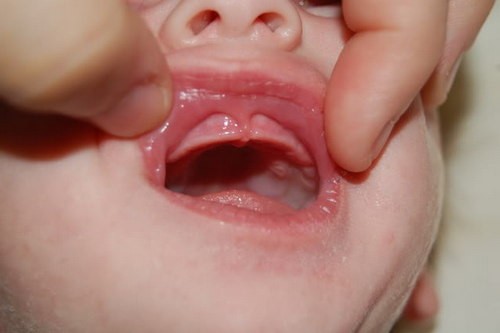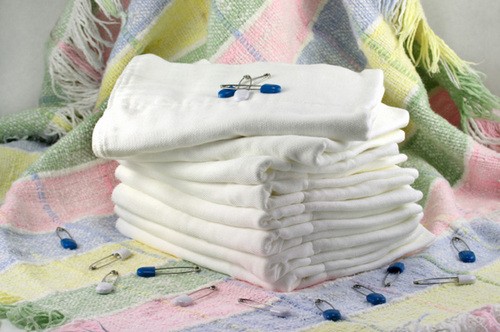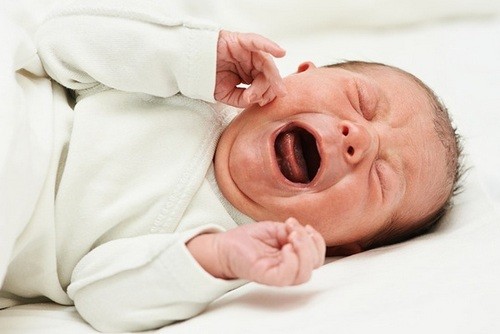The mucous membrane of the oral cavity of any person has a huge number of microorganisms that live for many years. Their aggressive state can awaken any fungus that gets to them at the wrong time.
One of them is Candida albicans fungus, which can trigger the growth of a huge number of bacteria. With any violations of microflora in the mouth, thrush can develop, which is one of the most common diseases in newborns and infants.
Thrush in an infant in the mouth appears as a white coating that appears on the surface of all mucous membranes.
Symptoms
The baby’s cheeks, tongue, gums and palate can be covered with an unpleasant white coating, which with large accumulation can become inflamed and cause anxiety in the child. Often, mothers confuse thrush with natural white coating on the tongue.
However, after cleaning under a plaque, red inflammation can be detected – this indicates thrush.
Thrush on the tongue in infants causes irritation and anxiety. He can be moody and completely refuse food. This is the child’s natural behavior, as milk or the sucking process itself can cause him pain and burning. Over time, neglected cases of thrush develop into white films and the formation of curd in the form of plaque. This suggests that microbes and fungi have managed to increase several times since infection.
Reasons for the appearance
The main reason for the appearance of thrush in a child may be the presence of candidiasis in the mother, which can be transmitted to him through the birth canal. Children who were born with weak immunity and ahead of time can also be influenced by this fungus. Thrush can also develop in children, who often burp, as well as in those moments when the baby’s teeth begin to erupt actively.
The main reason for the appearance of thrush is poor hygiene. Infection can be brought into the baby’s mouth through insufficiently washed nipples, spoons, or the mother’s breast. The reason may also be poor hygiene of those foreign objects that the child pulls his mouth just like that.
Thrush is usually not associated with other diseases and is quickly treatable. The main thing is to observe the hygiene of the mother and the child so as not to cause a re-manifestation of the disease.

Treatment
The main danger of thrush is the direct spread of all other bacteria and infections that can easily enter the child’s body. Thrush in a neglected state is able to fill the entire oral cavity. On average, treatment of thrush in infants takes no more than 5-10 days, depending on the complexity and neglect of the case. Most often, special ointments, solutions and creams are used for treatment, which actively kill the fungus and act on it in the most destructive way.
Moms prefer to use special candidate solutions that are applied to gauze or cotton buds and wipe their baby’s mouth several times a day. To determine how to treat thrush in an infant, it is best to show the child to a doctor who will prescribe the remedy himself, depending on the complexity and neglect of the case.
Often thrush is treated with folk remedies, wiping the baby’s mouth with weak solutions of soda. To do this, dissolve 1 teaspoon of soda in a glass of boiled water and wipe the baby’s mouth several times a day. In such a solution, you can also rinse a spoon or baby’s nipple, and then give it to your mouth. The people often practice natural honey, which is applied to a bandage and wiped the child’s oral cavity.
If the child is very small and there are suspicions that the mother has the infection, then they undergo treatment both. Since through the breast milk and mother’s nipples, the baby can again catch the thrush within a few weeks after recovery.
Prevention
To prevent the development of infection in the oral cavity in a child, a number of preventive measures can be taken.
The most important thing is to carefully monitor the baby’s hygiene and the environment. Read more about caring for a newborn child from birth to the first walk →
After eating, you can give your child a few sips of plain water, which will restore a neutral acidic environment in the oral cavity to prevent the development of the fungus. This is best done with boiled chilled water.
If the baby is fed only by mother’s milk, then the best prevention will be washing before each feeding of the mother’s nipples with a special soda solution. If the child eats mixtures, then it is best to boil or sterilize all the nipples, bottles and soothers before giving them to the child.
Such simple hygiene rules will help you avoid problems with thrush in the future and protect your baby’s health as much as possible.



